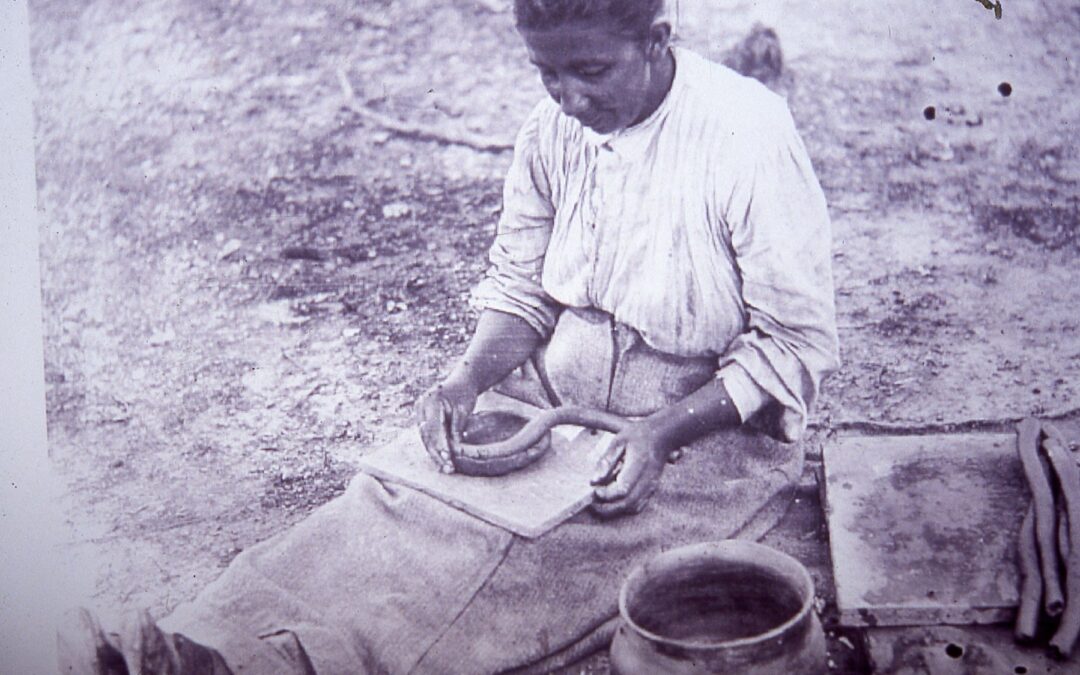Rachel Brown hand coils a piece of pottery in 1908. Rachel Brown is one of the links in the ancestral chain keeping Catawba pottery alive for future generations of potters. Image Credit: CC BY-NC-ND 4.0
Walking into a local North Carolina art gallery, a small clay turtle catches your eye. The turtle fits neatly in the palm of your hand and seems to come alive as you look more closely at the crisp lines of brown and green scales drawn carefully in the smooth grey rounded shell. Made by Catawba artist Sara Ayers, this tiny turtle pays homage to one of the Catawba Indians‘s spiritual “Creators”. Sara also hand-crafts wedding jugs, snake pots, bowls, and water jugs with clay from the banks of the Catawba River to continue a tradition that dates back 4,000 years and is the among oldest continuous ceramic craft in the what is now North America. Today, more than 50 Catawba potters practice this ancient art form shaped by the Piedmont region – the landscape of their ancestors.
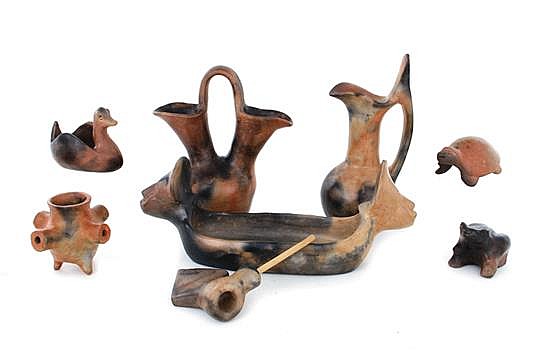
Pottery by Sara Ayers, a famous Catawba potter. Along with jugs, pots, and other effigies, Sara has scultped a turtle. Turles are one of the “Creators” of existence in Catawba culture. Image Credit: Charlton Hall Auctions
The Catawbas discovered long ago that the grey clays dug from pits along the banks of the Catawba River were perfect for making hand coiled, slow-fired, and stone-finished pottery. Making pottery with Catawba River clay is central to the identity of the Catawba Nation. The locations of these pits were kept secret and passed down from generation to generation in order to preserve this important cultural resource for future generations.
The gentle rolling hills and low ridges of the Piedmont sit atop both metamorphic and igneous rock. Over millions of years, weather and the actions of plants and animals slowly broke down this bedrock into very pure, very fine-grained clay soils. Although clay soils are common throughout the Piedmont, the kind of clay soils that can be made into useful items are found in just a few specific places in the region. The best clays for pottery are high in certain minerals like sodium, calcium, alumina, and silica. The silica hardens the clay in firing. The alumina slows the firing process enough to prevent cracking and breaking. The sodium, calcium and other minerals in the clay influence the color, strength and heat tolerance of the finished pottery.

Cecil soil, pictured above is a type of deep, well-drained clay soil found on the slopes and ridges of the Piedmont region. Image Credit: Public Domain
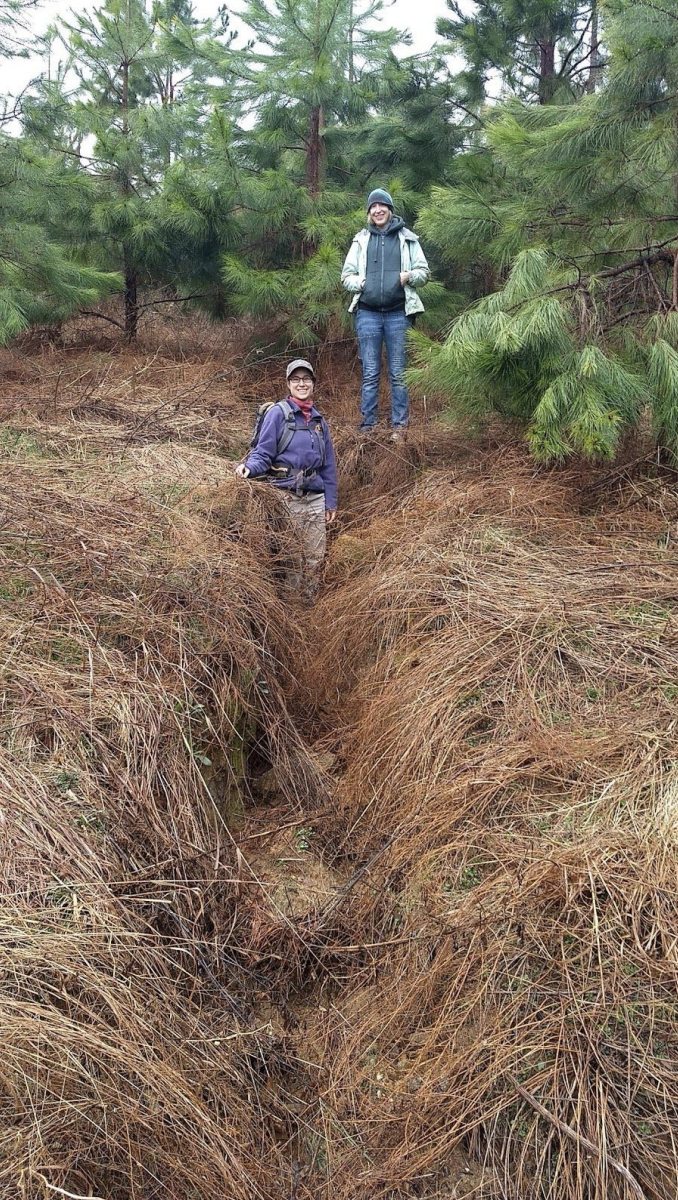
Two land surveyors from Kindred Roots Design stand in a steep eroded gully along the side of the bowl. This gully was made over time by coursing water runoff. Image Credit: Kindred Roots Design
Clays continue to be important to the people of the Piedmont today to make products like bricks, tiles, cement, and other building materials. Because modern clay mining involves the complete destruction of the landscape, it comes at a huge cost to people and place in the form of air and water pollution, soil erosion, biodiversity and habitat loss. These damages can linger long after a mine is no longer active and many old clay mines scar the landscape of the Piedmont today.
Catawba Run is the site of a clay mine constructed to reinforce the nearby Lake James dam. Despite restoration efforts by the mining company after the dam was completed, damage done by the mining still lingers today. The mine left behind an eroded bowl with pools of standing water and drainage ponds. Although loblolly was planted in the area to restore the area after the work on the dam was completed, some trees were clear-cut a few years later, and others didn’t thrive. Now, we are in the process of healing the land. We are following a sustainable forest management plan, working to improve soil health by planting cover crops over the cleared parts of the mined area, and will create wetland habitats in the areas that hold water after heavy rainfalls.
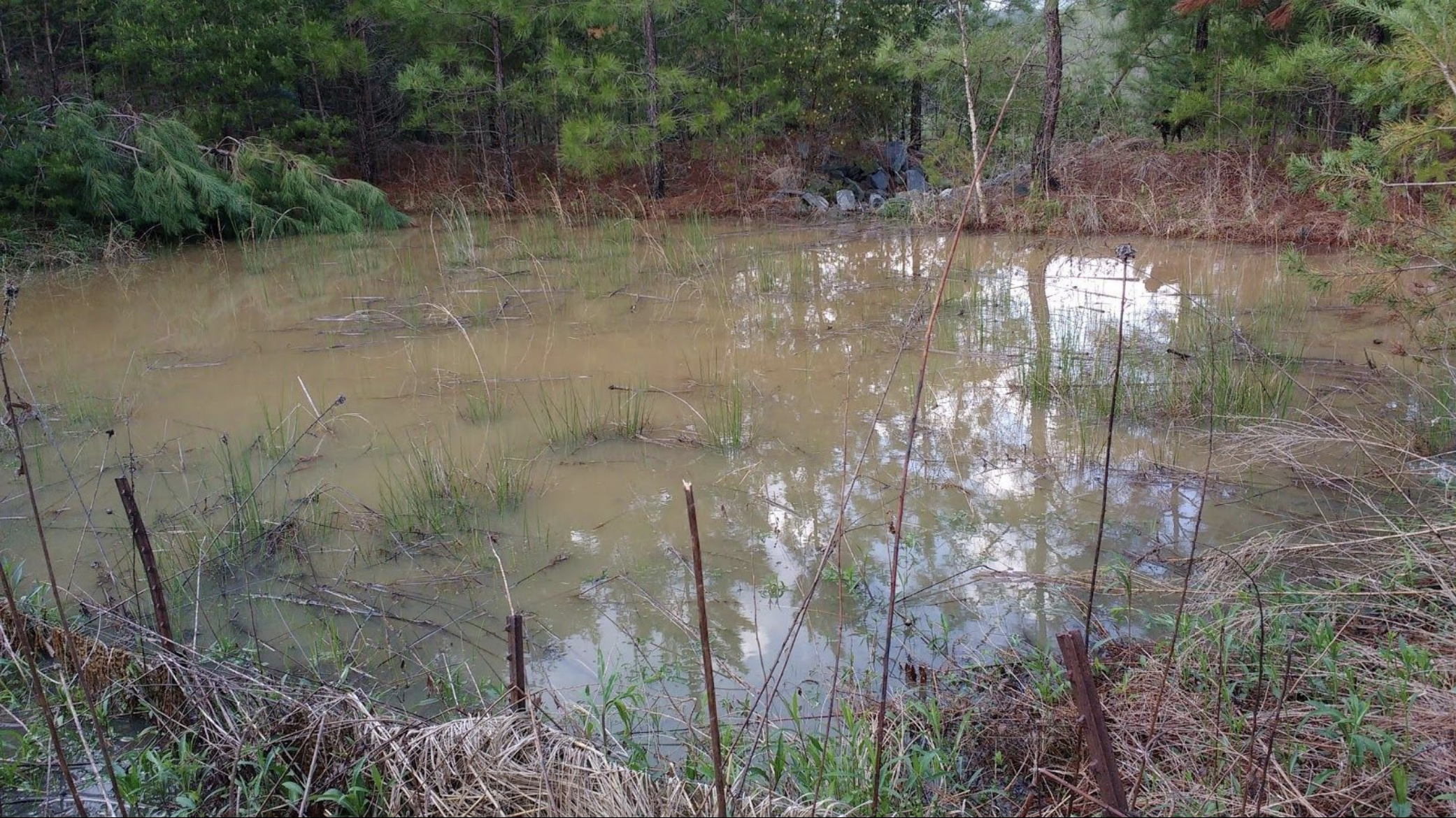
One of two water collecting ponds on the East side of the bowl. Frogs and other wetland amphibians are already beginning to make these areas their home. This ponded area is a potential site for installing and encouraging more wetland habitat. Image Credit: Kindred Roots Design
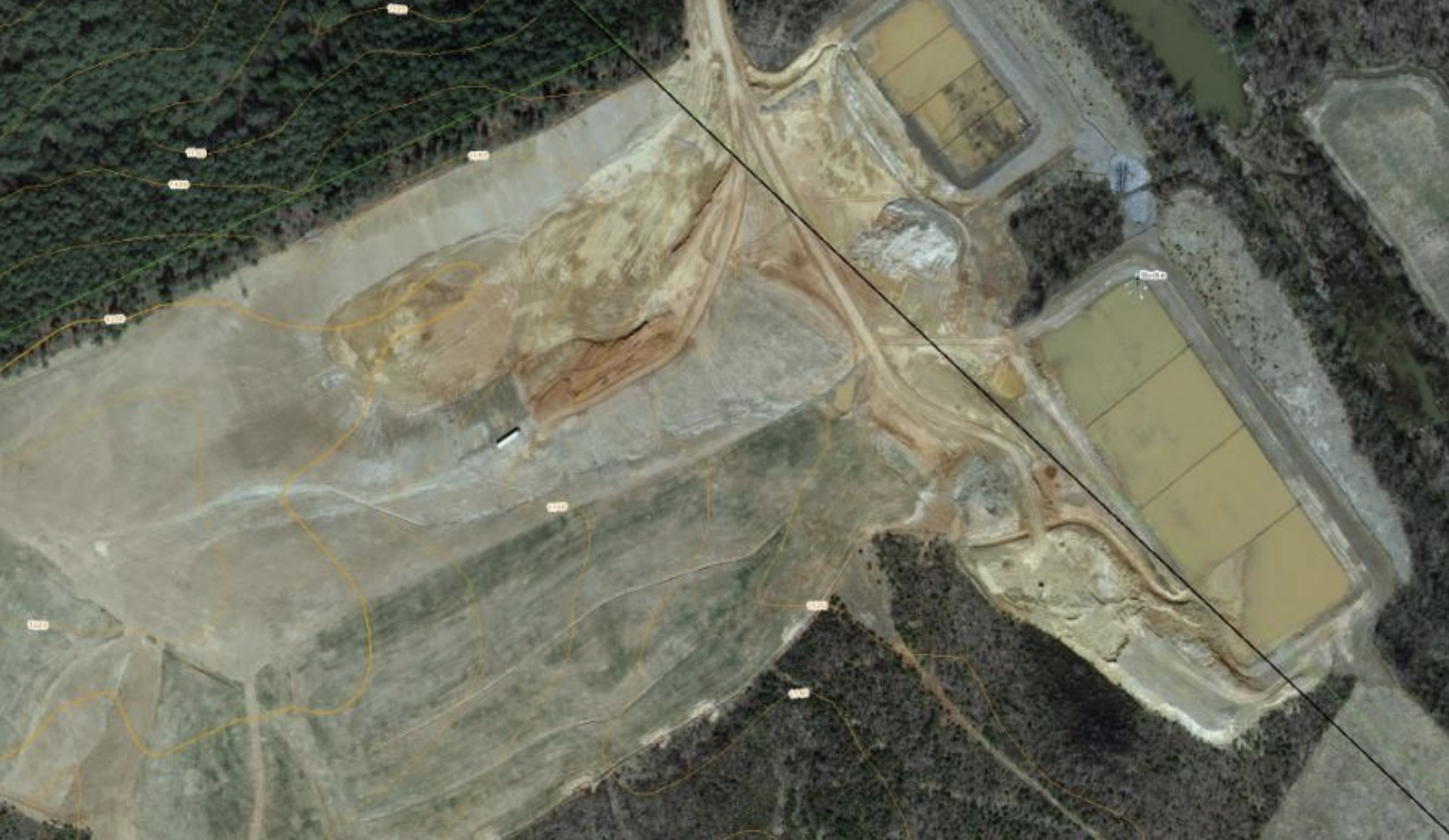
A close up of the active clay mine at Catawba Run back in 2009. Image Credit: Kindred Roots Design
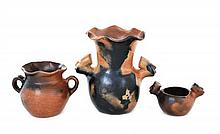
Traditional Catawba pottery by Sara Ayers. Image Credit: Charlton Hall Auctions
The clays of the Piedmont tell a 4000 year old story of cultural and ecological resilience that begins in the ancestral waters of the Catawba Nation and continues to this day as the scars of mining slowly heal across the landscape of Catawba Run.

The mined area at Catawba Run as it looks today, about a decade after the area was reclaimed and planted to loblolly pine. This image was taken after our first forest restoration planting last year. Image Credit: Fair Use, Google Earth
Catawba Run is 275 acres of old growth, unmanaged regrowth, and sustainable pine plantation located in the Piedmont region of North Carolina, near Nebo, just west of Morganton. This land is the setting for Foragable Community’s next demonstration of our shared values: to use ecological management practices and resilience principles to restore the health and wellbeing of degraded landscape, and concurrently have a positive impact on the lives of people who participate in this vision of redemption and renewal.
The Catawba Indian Nation are the descendants of the original inhabitants of land that we call Catawba Run. The Catawba, or “the people of the river” pronounced yeh is-WAH h’reh in their native tongue, were farmers, renowned potters, and stewards of the land in most of the Piedmont of South Carolina, North Carolina, and Southern Virginia. Foragable Community acknowledges that Catawba Run is on this ancestral land.
Resources:
Catawba Pottery. Catawba Indian Nation
Real Dirt About Clay. UNC TV: Science
From NCPEDIA

